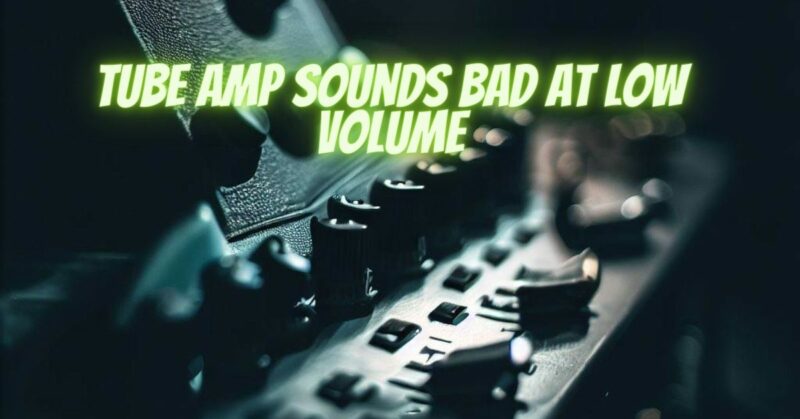Tube amplifiers are renowned for their warm and rich sound quality, but they can sometimes present challenges when it comes to achieving satisfactory performance at low volume levels. Many tube amp enthusiasts find that the tone and overall experience can suffer when playing at lower volumes. In this article, we will explore some common reasons why tube amps may sound bad at low volume and provide practical tips to enhance your low-volume listening experience.
- Impedance Mismatch:
Tube amps often have a specific speaker impedance requirement for optimal performance. When operating at low volume levels, an impedance mismatch can occur between the amp and the speakers, leading to poor tone and reduced overall sound quality. Ensure that your speakers match the recommended impedance of your tube amp to maintain a balanced and clear sound, even at lower volumes.
- Tube Bias:
Tube bias refers to the proper adjustment of the electrical current flowing through the tubes in your amplifier. Improper biasing can result in suboptimal performance, particularly at low volumes. Consult your amplifier’s manual or seek professional assistance to ensure that the tubes are properly biased, allowing them to function optimally at all volume levels.
- Speaker Efficiency:
The efficiency or sensitivity rating of your speakers can significantly impact their performance at low volumes. Speakers with higher efficiency ratings are more capable of reproducing sound accurately and with better dynamics, even at lower volume settings. Consider upgrading to speakers with higher sensitivity to improve the overall sound quality of your tube amp at lower volumes.
- Attenuators:
Attenuators are devices designed to reduce the output volume of your tube amp while preserving the tone and characteristics of the amplifier. They allow you to achieve power tube saturation and natural tube amp overdrive at lower volume levels. Investing in a high-quality attenuator can help you dial in the desired tone and response, even when playing at low volumes.
- Preamp Gain and Volume Controls:
Experiment with adjusting the preamp gain and volume controls of your tube amp. Finding the right balance between these controls can significantly impact the tonal quality and response at lower volumes. Adjusting the preamp gain can help to achieve a more pleasing sound and compensate for any loss of dynamics at lower volumes.
- Room Acoustics and Placement:
The acoustics of your listening environment can affect how your tube amp sounds at low volume. Consider the placement of your speakers and any room treatment that can enhance the overall sound quality. Experimenting with speaker placement, adding acoustic panels or diffusers, and reducing reflective surfaces can improve the perceived sound quality, even at lower volumes.
- Tube Selection:
Tubes play a crucial role in shaping the tone of your tube amp. Different tube types and brands can have varying characteristics and respond differently at different volume levels. Experiment with different tube combinations to find ones that complement your desired sound and perform well at lower volumes. Consult with knowledgeable tube amp enthusiasts or technicians for recommendations.
Conclusion:
While tube amps can present challenges when it comes to achieving optimal performance at low volume levels, there are various techniques and considerations that can enhance your listening experience. Addressing impedance mismatch, ensuring proper tube bias, and upgrading to more efficient speakers are important steps. Additionally, using attenuators, adjusting preamp controls, optimizing room acoustics, and exploring different tube options can all contribute to better sound quality at lower volumes. By implementing these strategies, you can unlock the full potential of your tube amp and enjoy rich, dynamic, and satisfying tones, even at low volume settings.


